BORDERWORK_REHEARSING PROXIMITY • Katarina Zdjelar
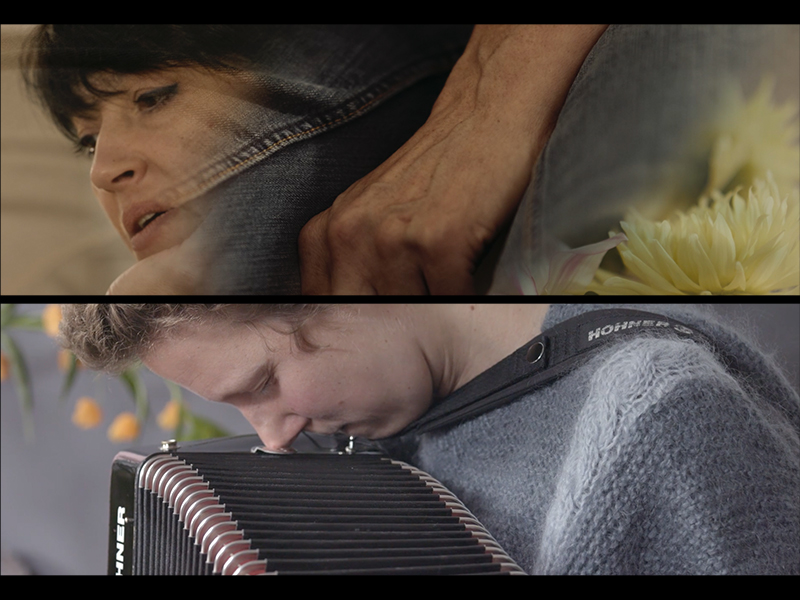
Podroom Gallery
Knez Mihailova 6 /-1
(entrance from the Belgrade Window Shop)
Opening: November 23 from 19.00
November 23, 2023 – January 14, 2024.
Katarina Zdjelar
BORDERWORK_REHEARSING PROXIMITY
Europe, stop pushing I know what I’m doing. I’m sick of your insane demands. Let a woman live.
How can I write a holy litany in your hopeless mood?
… From the Letter to Europe by the Iranian-Swedish poet Athena Farrokhzad
Katarina Zdjelar’s two last video works, Reading “Europe Where Have You Displaced Love?” (2019) and Gaze is a Bridge (2023) through the productions of the body, voice and image anticipate the problems of much larger social, cultural and political processes in relation to those that are actually performed. The processes of transition and contextualization of these three elements, body, voice and image penetrate into the intimate space of each of us, searching for closeness, which has become a serious generational and intergenerational problem. Athena Farrokhzad’s poems from 2018 and Nasta Rojc’s Self-Portrait with a Rifle from 1912, as the key inspirations for the two video works that form the exhibition, meet in the idea of a kind of subversive knowledge of a poet and a painter, who, with a temporal distance of one century, oppose the ruling ideas, re-examine historical canons and try to influence the reshaping of official knowledge. In a contemplative, non-prescriptive and intuitive way, these works talk about the potential of feminism and the deconstruction of theoretical paradigms of what is considered male, heteronormative, universal knowledge and refers to the critical analysis and transformation of social, sexual, gender relations of power and the order that produces them.
Exhibition curator: Zorana Đaković Minniti
A TEXT BY MARTINA MUNIVRANA IS TO BE FOUND HERE.
A TEXT BY KRIS DITTEL IS TO BE FOUND HERE.
●●●
Reading “Europe Where Have You Displaced Love?”
single-channel video, 29 minutes 26 seconds, loop, 2019
Katarina Zdjelar often employs the rehearsal as a working method to explore the voice as a subject and substance.
For this film Katarina Zdjelar brought together four musicians for an improvisational interpretation of a text written by poet Athena Farrokhzad, Europe, Where Have You Misplaced Love?. The aim of the improvisation is not so much to arrive at a final performance, but rather to keep the range of possibilities open.
One by one the musicians take control and then let it go again just before arriving at a common melody, at which point doubts or another voice steer the process in a different direction. It becomes a continuous search in which a multiplicity of interrelating voices coexists. This approach adds a layered interpretation to Farrokhzad’s reflections: https://lithub.com/athena-farrokhzad-europe-where-have-you-misplaced-love/ (accessed 01.02.2019).
●●●
Gaze is a Bridge
single-channel video, 22 minutes, loop, 2023
Dedicated to Nasta Rojc’s painting “Self-Portrait with a Rifle” (1912)
Katarina Zdjelar, an artist with a Dutch address, combines various media in her art practice, such as moving images, sound and performance. Through these strategies, she explores narratives, meanings and associations that are modified across different languages and cultural meanings, in various temporal frames and places of their performance, shaping the diversity of scenes and visual experiences. Her recent video work The Gaze Is a Bridge (2023) was filmed during her visits to Zagreb, where she realized her first solo exhibition at the Museum of Contemporary Art in December 2022. The video is inspired by Nasta Rojc and her painting Self-Portrait with a Rifle(1912)[1], as well as the work and personal story of photographer and video artist Ana Opalić. Their biographies, determined by the right to choose freedom and love, taking place in two different periods almost a century apart, intertwine with each other. It is precisely this temporal gap that highlights how our society and community have evolved in awareness and openness, how sensitized we, as a society, have become to others and to the different, and how much (if any) progress we have made in the context of accepting diversity and the right to freedom of choice and, at the same time, questions our personal positions and awarenesses.
In the introduction of this text, it is important to point to the biographies of the artists. According to Shoshana Felman, the life of every woman contains, explicitly or implicitly, a story of trauma that cannot simply be confessed, it must be testified to: “Insofar as any feminine existence is in fact a traumatized existence, feminine autobiography cannot be a confession. It can only be a testimony: to survival. And like other testimonies to survival, its struggle is to testify at once to life and to the death – the dying – the survival has entailed.”[2]
The biographies, intertwined precisely in efforts to secure their own survival and the choice and personal position of existence and belonging, are the fundamental starting point for connecting the two temporally distant life stories and bodies of work.
Nasta Rojc (Bjelovar, 1883 – Zagreb, 1964) is one of the most important Croatian painters, with avant-garde tendencies, with an oeuvre mostly consisting of nudes, portraits, self-portraits and landscapes. Although she was included in national surveys of 20th-century painting in Croatia, the role and oeuvre of Nasta Rojc were marginalized for years. Recent art historical readings and theoretical discourses, which do not rely exclusively on the modernist canon but interpret it as only one of the possibilities, have provided theoretical frameworks for the interpretation and re-evaluation of Nasta Rojc’s work within the international historical and social context. Besides her work as a painter, Nasta Rojc was very engaged socially and played a strong role within the institutional system. Her unconventional life was marked, among other things, by a traumatic education, resistance to bourgeois canons and rules, a formal marriage with her friend Branko Šenoa, the founding – with Lina Crnčić-Virant – the Club of Women Artists in 1927, bringing together Croatian and Yugoslav female artists. After the end of World War I, she met her life partner Alexandrina Maria Onslow, a British Army officer, and the renowned British suffragette Vera Holme, with whom she stayed in England and Scotland in 1925 and 1926. Upon the return to Croatia, Nasta Rojc and Alexandrina Onslow were among the first to live openly in a same-sex domestic partnership in Zagreb.
Ana Opalić (Dubrovnik, 1972) is a photographer, cinematographer and musician, a versatile artist and an activist for LGBT rights. Her photographic opus consists of several series and cycles in which the landscapes of Dubrovnik play a very significant role. Her latest series of photographic records, titled Diary Entries (2009-2020), is dedicated to her life partner, Martina Zvonić. Through portraits or snapshots of shared moments, Ana Opalić captured fragments of their life together over a span of ten years. Since 2019, their adopted daughter Meri, a little girl from Africa, has appeared in the photographs, making their rainbow family complete. Ana and Martina are also co-founders of the Croatian queer pop band “U pol’ 9 kod Sabe”.
The video The Gaze Is a Bridge begins with a hand holding a photograph of Nasta Rojc’s painting Self-Portrait with a Rifle.
Self-Portrait with a Rifle shows the painter in a hunting suit, with a rifle slung over her right shoulder, while her left hand rests in the jacket pocket, rejecting the concept of bourgeois femininity. Her gaze is penetrating and self-aware, sharp and provocative, addressing the viewer. The palm of another person’s hand is placed on the hand holding the photograph. The camera then reveals the faces of the main protagonists of this video, Ana Opalić and her life partner Martina Zvonić. Their faces subtly overlap in the frames, illuminated by soft daylight. Ana and Martina alternately utter various associations with the photograph of the painting, starting with the sentences:
Bridge
Silence
On the other side
Coldness
The gaze is not enough
……
The gaze is a bridge
Over what
To the other side
…
Struggle
Giving up
Never
Creation
……
As if, in the manner of American linguist Suzette Haden Elgin, they are creating their own personal language so that others can see the painting and its meaning through their perspective. In their game of linguistic associations, they name what they see, adding some new meanings to the painting that are not written in official narrative interpretations but are based on their prior knowledge of the artist and her work in the context of their own biographies and positions. Dialectics between the protagonists is articulated in the gap between universally applicable abstract language and the concrete and physical voice. Their wordplay stimulates their personal interaction, showing emotional connection, tenderness and understanding. In the wordplay, the emotion of love and tenderness expressed in gazes and smiles is distinctly dominant. As in her previous works, Katarina Zdjelar creates a visually captivating video, infused with a thoughtful combination of images, light and sound. Their dialogue is interrupted by a voice saying “mama”. Then the photograph of Nasta Rojc’s painting enters the frame; the wordplay is interrupted with the image of little Meri, the adopted daughter of Ana and Martina, who is watching the mentioned photograph. Zdjelar subtly introduces in the video the figure of the girl, whose image is accompanied with the sound of a guitar played by Ana Opalić. The figures of Ana, the girl Meri and the boy Niru, Katarina’s son, interweave. In this emotional weave of characters, music and the atmosphere of home, a space opens up for questioning one’s own relationship to the intimate and personal space of belonging.
The sounds of the guitar, the children drawing, their mutual interaction, their connecting gazes introduce us to the next segment, taking place in the National Museum of Modern Art, where Nasta Rojc’s work Self-Portrait with a Rifle (Self-Portrait in a Hunting Suit) is housed. In the main corridor of the exhibition space, we can see the children Meri and Niru running towards the end of the room. In the next frame, museum technicians, the children and Ana Opalić approach the camera, carrying Nasta Rojc’s original painting and placing it on an easel. The final frames show the confrontation with the painting, confrontation with Nasta’s penetrating gaze and Ana’s gentle and supportive gaze, as well as the curious gazes of the children. Their gazes meet in a non-verbal dialogue between the past and the present. The gaze is a bridge!
The video work The Gaze Is a Bridge raises many questions and, in the manner of Katarina Zdjelar’s previous works, this work questions personal and collective positions, questions autobiographies and their meanings, and questions the gaze and what it is. Laura Mulvey states that the place of the gaze, the possibilities of its variation and exposure are the elements that define film, emphasizing that there are three different gazes associated with cinema: the gaze of the camera, the gaze of the audience and the gaze the characters exchange on the projection screen. The conventions of narrative film deny the first two and subordinate them to the third, the conscious aim being always to eliminate intrusive camera presence and prevent a distancing awareness in the audience.[3]
The gaze in Katarina Zdjelar’s video is a gaze of connecting autobiographies, of understanding, but also a gaze that challenges us to reach out and cross the bridge between the known and the unknown, between the present and the past, to establish a bridge of connection between us and them, me and you. To recognize ourselves in our fragility, alienation, vulnerability, in the struggle for personal positions and places that belong to all of us.
Martina Munivrana, art historian and curator
Museum Advisor, Head of Collection Department, Head of Benko Horvat Collection at the Museum of Contemporary Art in Zagreb
●●●
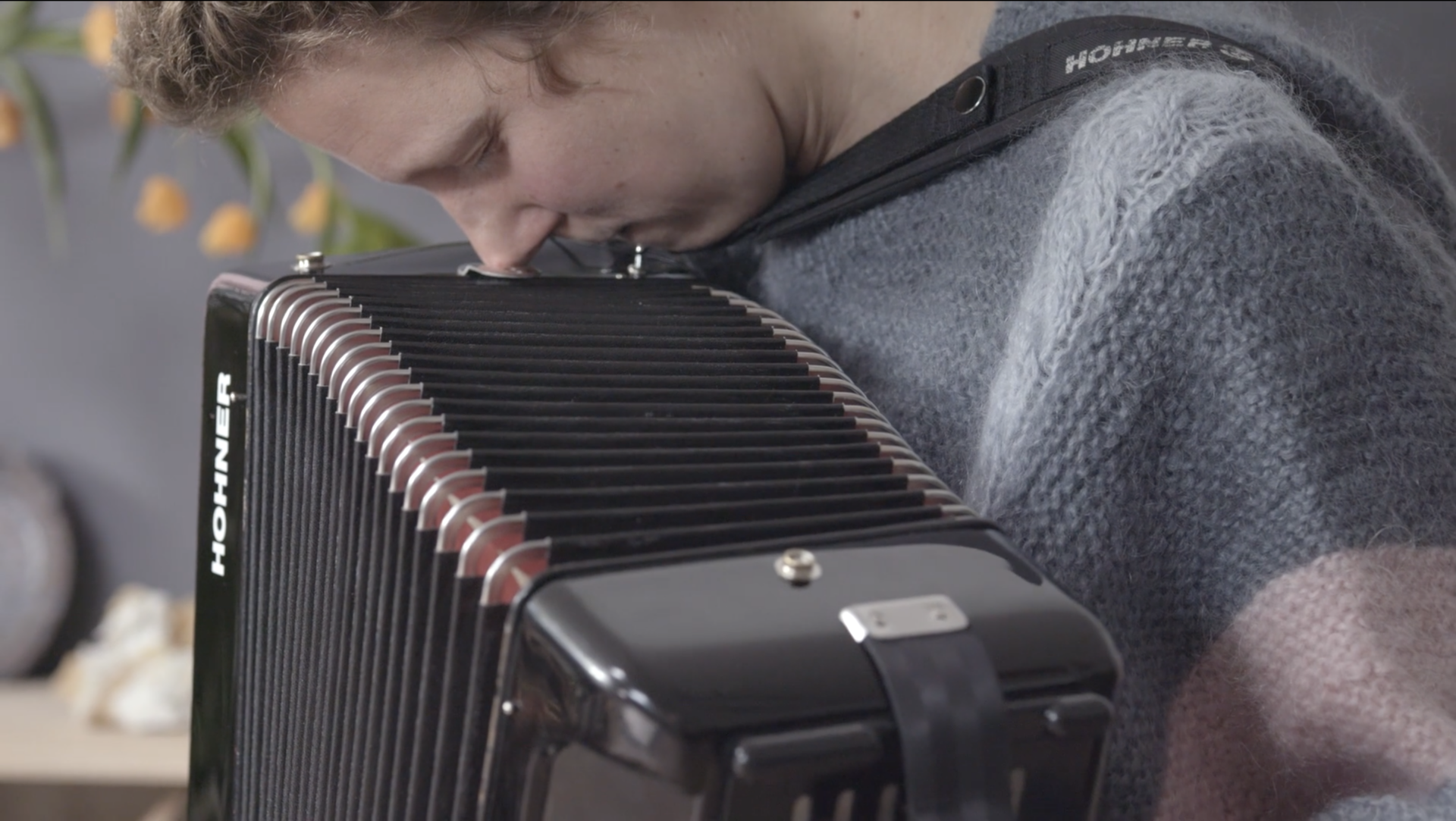
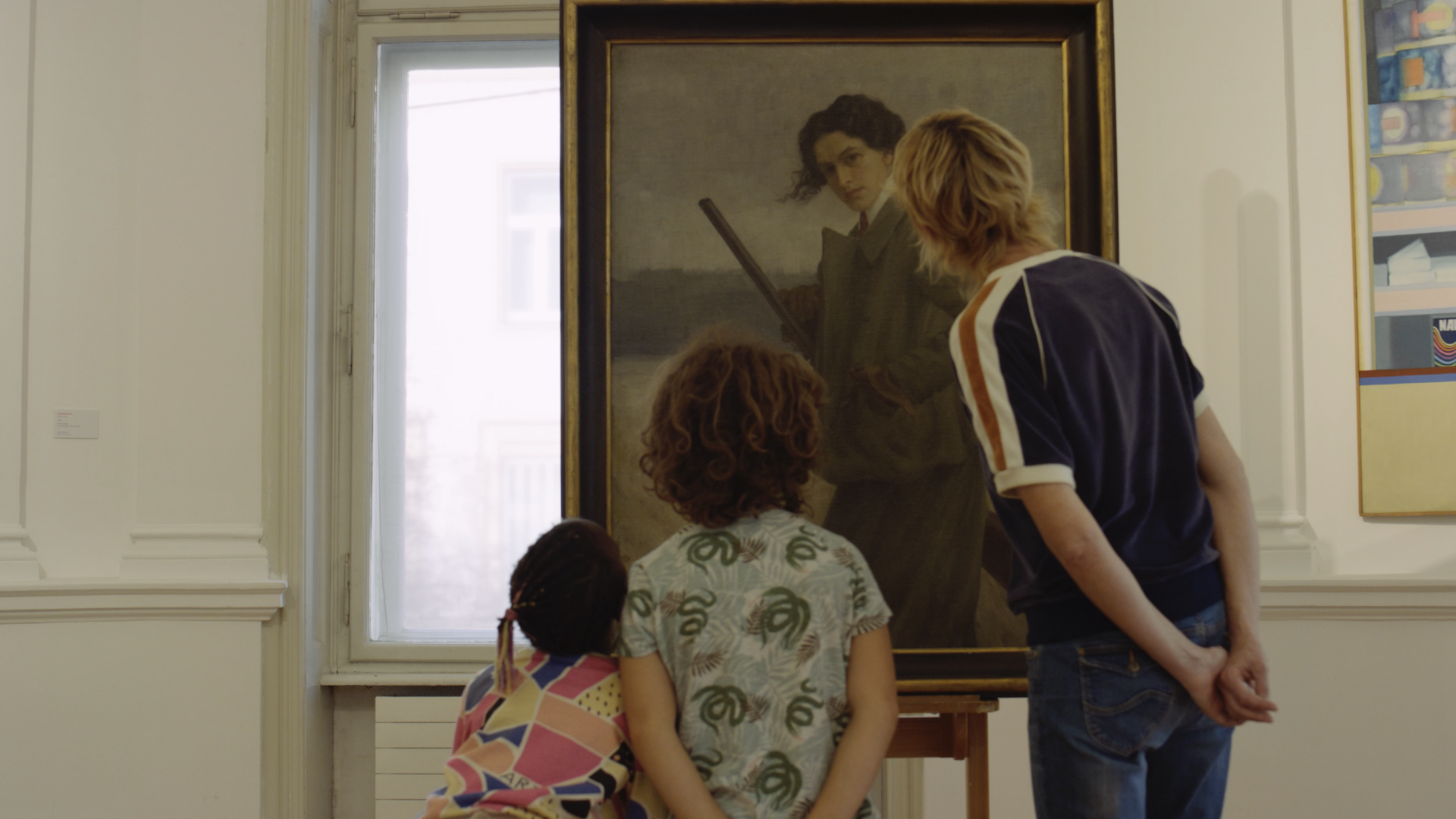
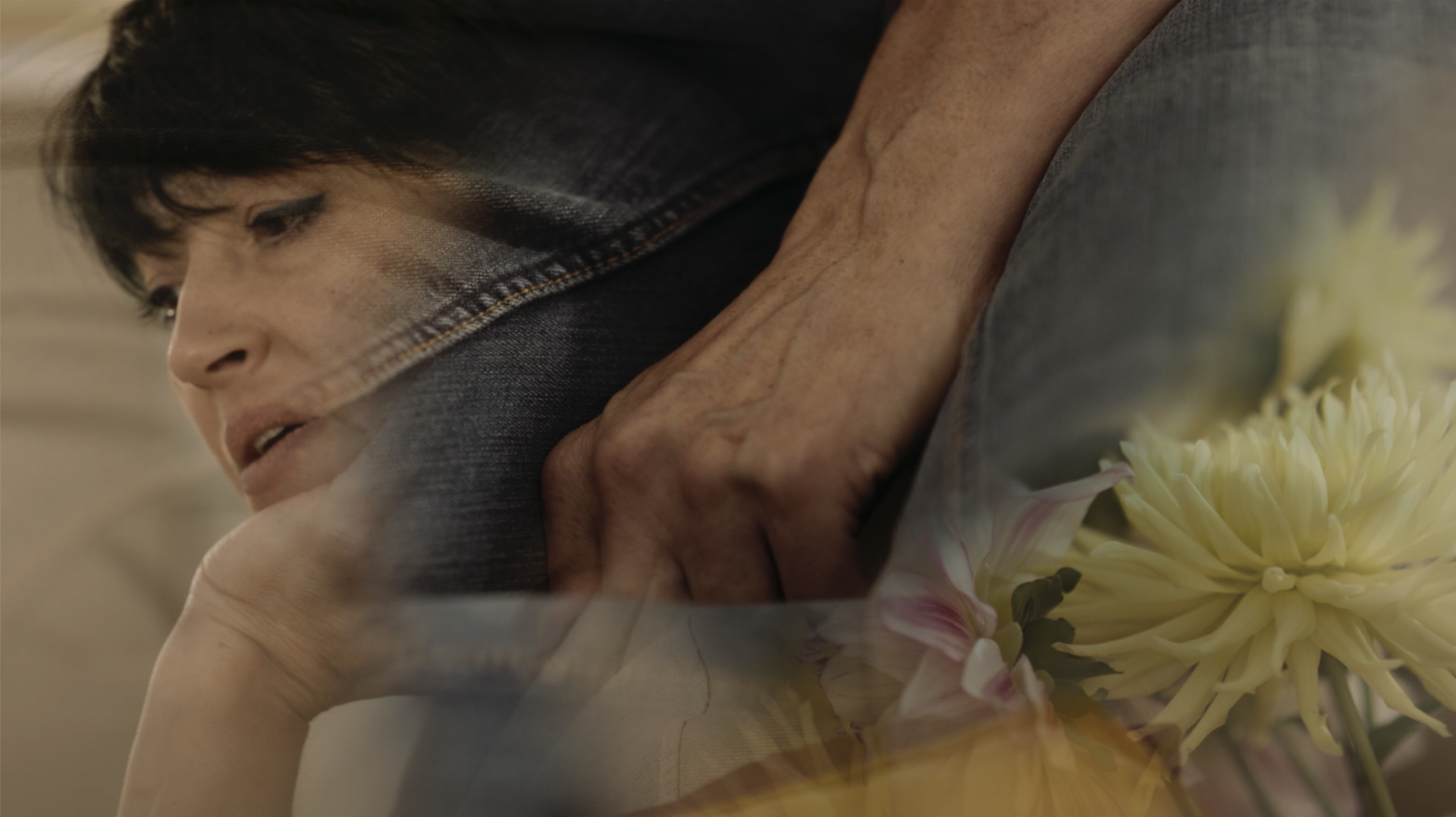
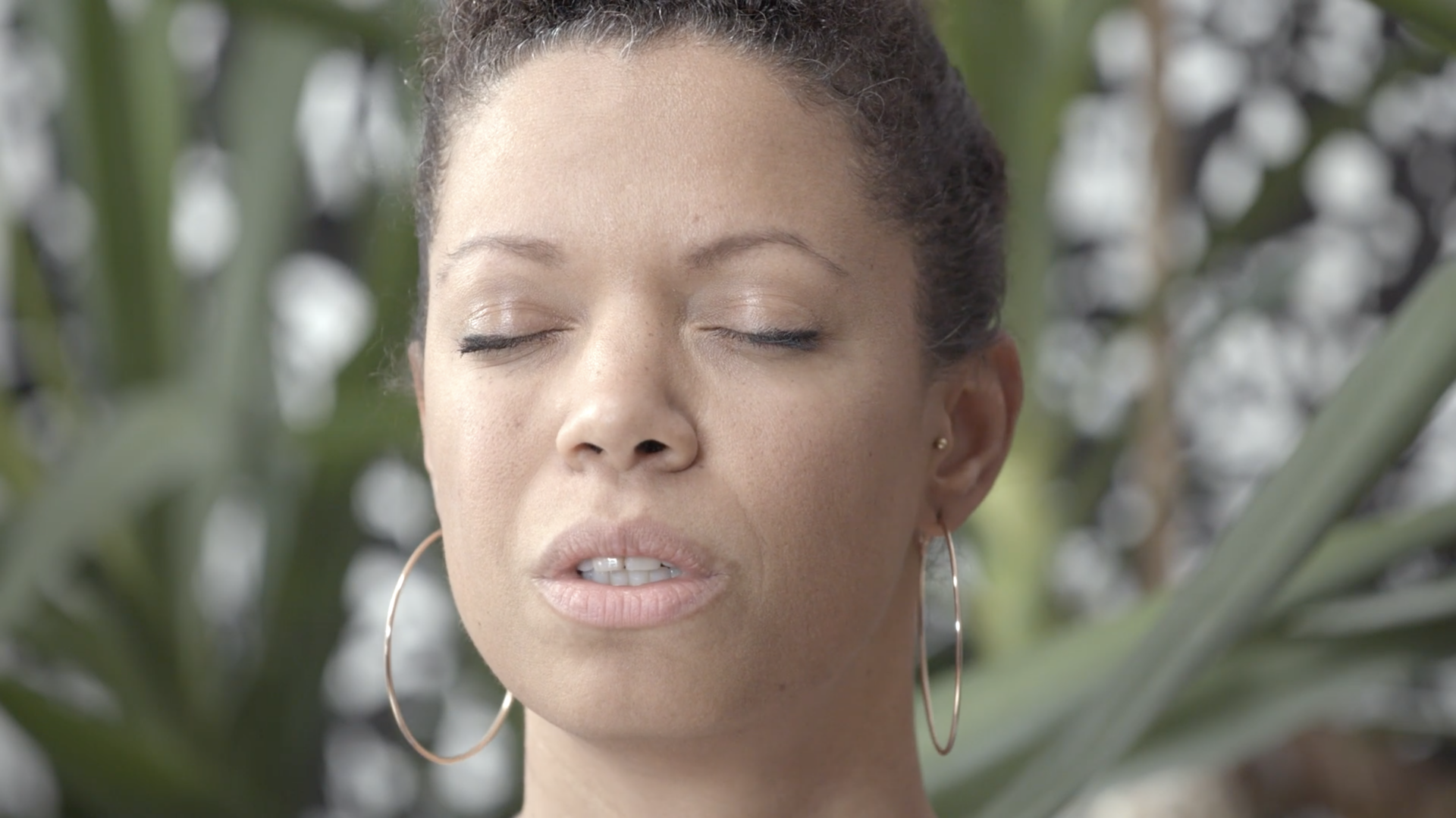
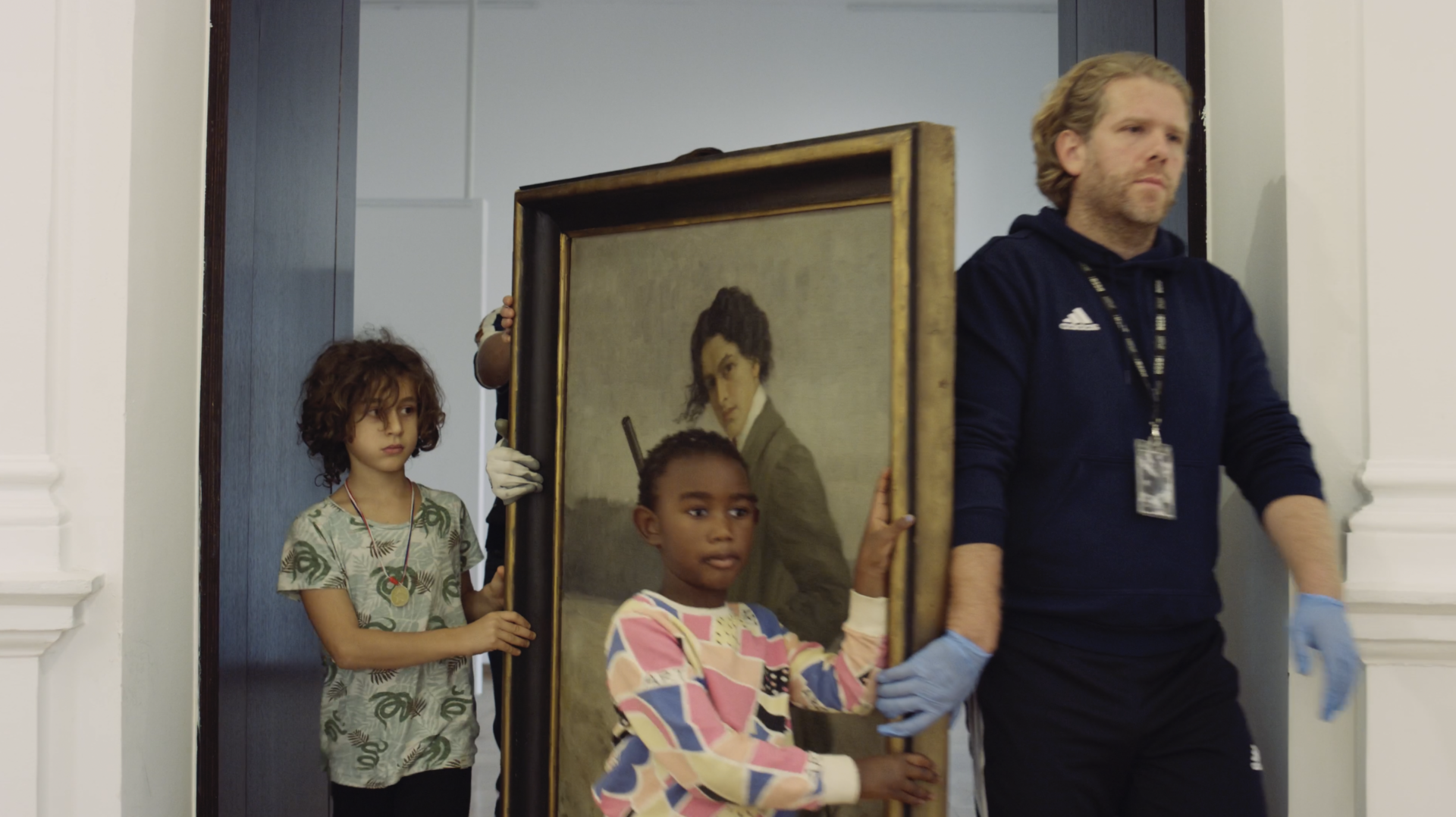
Short biography of Katarina Zdjelar
Katarina Zdjelar is born in 1979 in Belgrade. She lives and works in Rotterdam, Netherlands.
She is working mainly in the medium of moving image, film and installation. Her work explores the way one body encounters another as a site of resistance and possibility, pointing to the fragile agency of collective action in the present. Voice, music, sound and language have been the core interests throughout her practice.
Katarina Zdjelar holds an MA in Fine Art from the Piet Zwart Institute in Rotterdam, she is a graduate of the University of Arts Belgrade and has completed a two year residency at the Rijksakademie van beeldende kunsten in Amsterdam.
Katarina Zdjelar represented Serbia at the 53rd Venice Biennale and has participated in numerous solo and group exhibitions internationally at such venues as 11th Berlin Biennale, Stedelijk Museum Bureau Amsterdam; Metropolitan Museum of Photography, Tokyo; Frieze Foundation, London; Casino Luxembourg; De Appel, Amsterdam, MACBA Barcelona; MCOB Museum of Contemporary Art Belgrade; Museum Sztuki Lodz…Her works are in many international private collections as in the collection of Stedelijk Museum Amsterdam, MACBA Museum of Contemporary Art Barcelona, Museum Sztuki Lodz, Museum of Contemporary Art Belgrade, October Salon Collection of the Cultural centre of Belgrade… She was awarded several prizes among them: Award of the 50thOctober Salon (2009), the MMSU Award of the 24thZagreb Salon (2019), Dolf Henkes Prize (2017), as she was one of the nominees for the Dutch Prix de Rome Award (2017, 2010).
Cooperation with the Cultural Center of Belgrade began with her participation at the 50th October Salon (2009), after which her video work My Lifetime (Malaika) was part of the Artists’s Film International program as proposal of the Cultural Centre of Belgrade. She participated in the 57th October Salon. The October Salon Collection includes two special editions of Katarina’s works: Shoum (study) and AAA (Mein Hertz).
Katarina Zdjelar is also an educator in her post as a core tutor at Piet Zwart Institute (MA Fine Art), WdKA Rotterdam and MAR (Master Artistic Research) at the Royal Academy of Arts in The Hague. More information at www.katarinazdjelar.net
……………………………………………………………………………………………………………………………………………………………………………..
[1] In the book Anonimalia, normativni diskursi i samoreprezentacija umjetnica 20. stoljeća [Anonimalia, Normative Discourses and Self-Representation of 20th Century Women Artists], Leonida Kovač labels the painting as Self-Portrait with a Rifle. The mentioned painting is part of the collection of the National Museum of Modern Art in Zagreb, under the title of Self-Portrait in Hunting Suit.
[2] Shoshana Felman, What Does a Woman Want?/ Reading and Sexual Difference (Baltimore and London: The
Johns Hopkins University Press, 15-16.
[3] Laura Mulvey, “Vizualni užitak i narativni film” [“Visual Pleasure and Narrative Film”], in Feministička likovna kritika i teorija likovnih umjetnosti [Feminist Art Criticism and Feminist Theory of Art] edited by Ljiljana Kolešnik (Zagreb: Centre for Women’s Studies, 1999), 65-77.